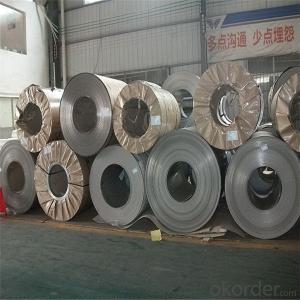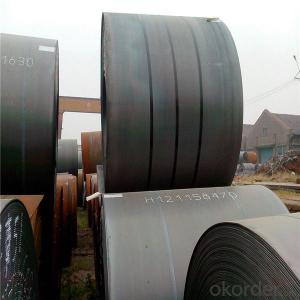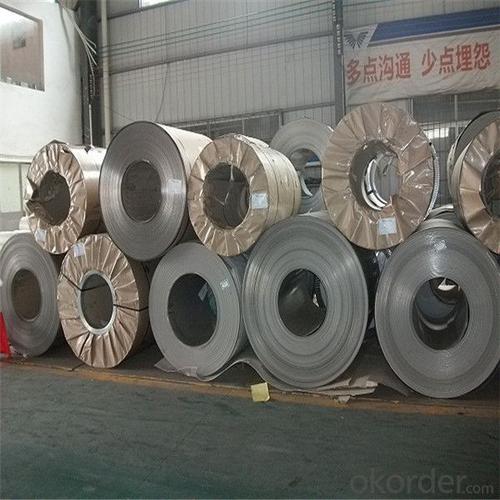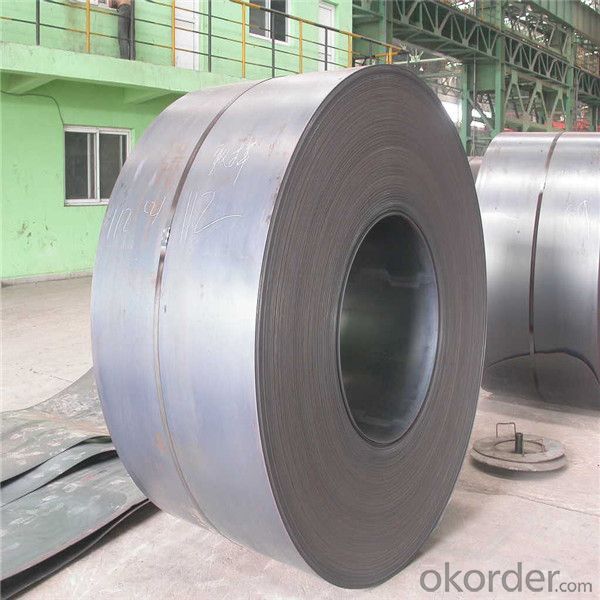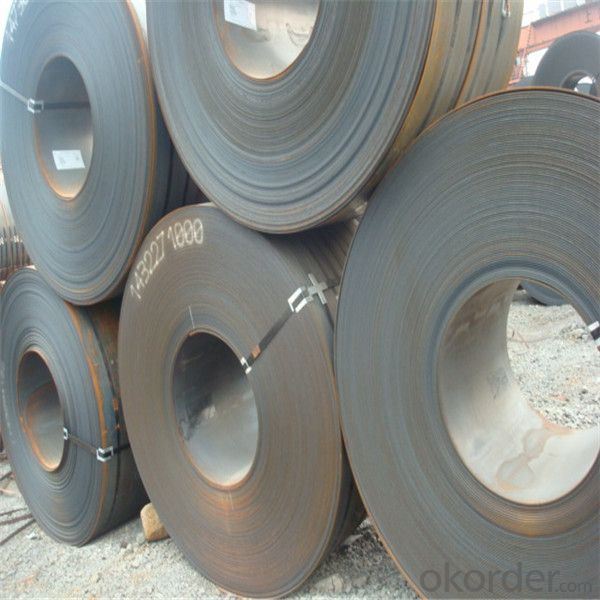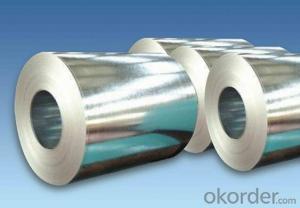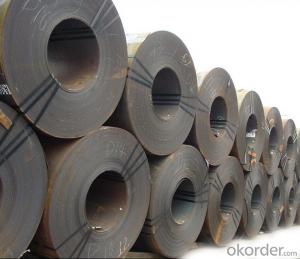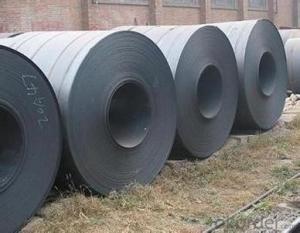A36 SS400 S235JR Q235 Q345 hot rolled steel coil
- Loading Port:
- Tianjin
- Payment Terms:
- TT OR LC
- Min Order Qty:
- 50 m.t.
- Supply Capability:
- 1000 m.t./month
OKorder Service Pledge
OKorder Financial Service
You Might Also Like
Specification
Hot-rolling mill: Equipment on which solidified steel preheated to a high temperature is continuously rolled between
two rotating cylinders.
These products are suitable for a wide range of applications, from formable quality to specific strength requirement in
material. SABIC can supply Hot Rolled Coils as Mill Edged, Side Trim Edged, Slit, Skin Passed, Chequered and Pickled
Coils.
Standard and Grade :
Hot rolled steel coils | ||||
JIS | ASTM | SAE | EN | |
Commercial quality | G3131 SPHC | A569 A635 A659 A1011 CS Type A,B,C | 1006~1025 |
10111 DD11 |
Drawing quality | G3131 SPHD | 1006~1010 | 10111 DD12 | |
Deep drawing quality | G3131 SPHE | A622 A1011 DS Type A,B | 1006~1010 | 10111 DD13 DD14 |
General structure (T.S.<490N/MM2) | G3101 SS330 SS440 G3106 SM400A G3132 SPHT1 SPTT2 SPHT3 | A36 A283 GR.C A570 GR.30~40 A1001 SS GR.30~40 |
1010~1025 | |
General structure (T.S.≥490N/MM2) | G3101 SS490 G3106 SM490A SM490YA | A570 GR.45~50 A607 GR.45~70 A1011 SS GR.45,50 |
J1392 050X | |
|
Application :
Automobile Industry, electrical appliance, machinery manufacturing, container manufacturing, shipbuilding,
bridge, pipeline, and receive high acclaim from our customers for its excellent quality.
Packing:
Packaging Detail | The packing of coil consists of anti-damp paper ,PVC film ,hardboard paper , steel box , strapped with steel strips, fitted with locks and edge protectors and guarantees the optimal condition of the delivered goods. Each coil can be additionally fitted with wooden/steel skids(eye of the side) or wooden pallets(eye of the sky) |
Delivery Time | within 30 days of receipt of LC original or prepayment |
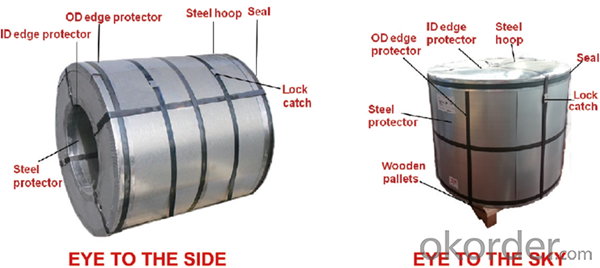
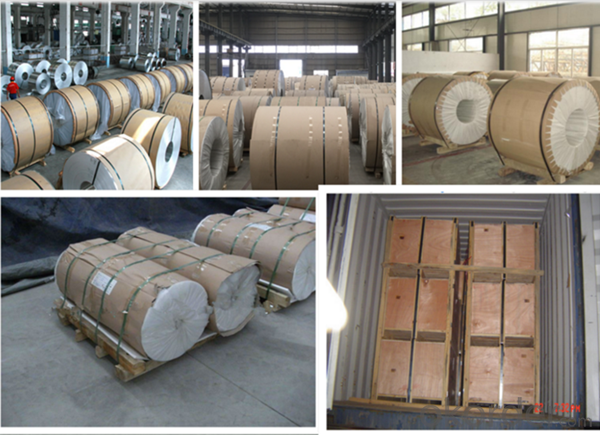
Our Services
MOQ | FCL, 25 metric tons per 20GP, can be assorted with different sizes. |
LCL for trial order is acceptable. | |
Price Term | EX-WORK, FOB China Port, CNF, CIF |
Payment | T/T, 30% advanced payment before production and balance before shipment; OR Irrevocable L/C at sight. |
Delivery Time | within 30 days of receipt of LC original or prepayment |
FAQ:
1. Can you offer OEM to me? What about MOQ?
Of course, we are a professional with OEM manufacturer for 9 years. the MOQ can be 50 ton/ order..
2. How to guarantee the quality of the products?
We have established the international advanced quality management system,every link from raw
material to final product we have strict quality test;We resolutely put an end to unqualified products
flowing into the market. At the same time, we will provide necessary follow-up service assurance.
3. How long can we receive the product after purchase?
Usually within thirty working days after receiving buyer’s advance payment or LC. We will arrange the
factory manufacturing as soon as possible. The cargo readiness usually takes 15-25 days, but the
shipment will depend on the vessel situation.
4.How Can I Get Some Sample?
We are honored to offer you free sample, but courier charges will be on your side.
- Q: What are the dimensions of steel coils used in the metal furniture industry?
- The dimensions of steel coils used in the metal furniture industry can vary depending on the specific requirements of each manufacturer. However, commonly used dimensions include coil widths ranging from 24 to 60 inches (61 to 152 cm) and coil diameters ranging from 36 to 72 inches (91 to 183 cm). The thickness of the steel coils can also vary, typically ranging from 0.020 to 0.250 inches (0.05 to 0.64 cm). These dimensions allow manufacturers to efficiently produce various types of metal furniture, such as chairs, tables, and cabinets, by utilizing the steel coils as raw materials for their production processes.
- Q: i wanna buy a sharp carbon steel sword the swords i want are a 200 layer carbon steel katana or a hand forged high carbon steel katanna or a hand sharpened sword which one would be sharper/stronger
- Carbon steel is a generic term. There are many different grades of carbon steel consisting of several different components of various amounts, and there are different types of treatment the steel can go through that changes it's quality. Carbon steel swords are a step up from the crappy stainless steel swords, and other alloys. Sword quality completely depends on the smith. 200 layers doesn't mean there won't be any imperfections. Sword makers make mistakes, especially the lesser experienced ones. Look into the maker(s) of the sword you're looking to buy. Find information on them before deciding. Carbon steel is the steel to have, but that doesn't exclude good or bad quality. Sharpness will depend on the the steel and the smith.
- Q: a concrete or steel building?also, what is the density of concrete and steel? is concrete heavier in steel for the same volume?
- The denisty of reinforced concrete is taken to be 150 lbs/ft^3 The density of carbon structural steel is 490 lbs/ft^3
- Q: What are the different grades of steel used in manufacturing steel coils?
- The different grades of steel used in manufacturing steel coils include low carbon steel, medium carbon steel, high carbon steel, and stainless steel.
- Q: I am reading the book The Cure For All Advanced Cancers by Hulda Regehr Clark.She writes for example: cancer can be caused by exposure to heavy metals, like nickel and chromium from stainless steel cookware. Stainless steel cookware releases chromium and nickel, two of the most carcinogenic metals.Are there any studies done measuring how much nickel and cadmium can be released from the regular use of stainless steel cookware?Is this a commonly accepted opinion that use of stainless steel cookware is dangerous?If not stainless steel, what kind of cookware to use? I heard that non-stick cookware also releases some harmful chemicals.
- perfluorooctanoic acid is a chemical used to make nonstick cookware. It has been shown to cause cancer in lab animals. The epa has asked companies that use that chemical to phase it out of the cookware, just in case. But it has not been shown to cause cancer in humans. Stainless is not known to cause any type of health problems. Cast iron is healthier and anodized aluminum is great too.
- Q: Can steel coils be perforated?
- Yes, steel coils can be perforated. Perforation is the process of creating small holes or punctures in a material, and steel coils can undergo this process to achieve specific purposes such as enhancing ventilation, improving drainage, or creating decorative patterns.
- Q: days. Use your knowledge of the corrosion of steel and aluminum to predict how they would look different after a week exposed to rainy weather. Explain your prediction.
- I'd expect appearance of reddish dots or stains of rust on steel, while aluminium should stay virtually unchanged. Explanation: Both materials oxidize in natural environment because of atmospheric moist, but in very different ways. As for steel, oxidation begins as reddish dots of rust which grow and become stains. Oxidation then progresses in depth causing decay of material, compromising its strength and structural integrity.
- Q: How are steel coils priced?
- Steel coils are priced based on various factors such as the current market demand and supply, raw material costs, production and operational expenses, transportation costs, and other market dynamics. Additionally, factors like quality, specifications, and any additional processing or customization required can also influence the pricing of steel coils.
- Q: How do steel coils contribute to energy efficiency?
- Steel coils contribute to energy efficiency in several ways. Firstly, steel coils are lightweight and can be easily transported, reducing the energy consumption associated with transportation. Additionally, steel coils have high heat transfer properties, allowing for more efficient heat exchange in various applications such as HVAC systems. Moreover, steel coils are durable and long-lasting, reducing the need for frequent replacements and saving energy associated with manufacturing new coils. Lastly, steel coils can be recycled, reducing the energy consumption and environmental impact of producing new steel. Overall, the use of steel coils promotes energy efficiency by reducing energy consumption, improving heat transfer, and facilitating recycling.
- Q: How are steel coils tested for dimensional accuracy?
- Steel coils are tested for dimensional accuracy using various methods such as measuring the width, thickness, and length of the coils. This can be done through manual measurement using measuring tapes or calipers, or with the help of advanced technologies like laser-based sensors or non-contact measurement systems.
Send your message to us
A36 SS400 S235JR Q235 Q345 hot rolled steel coil
- Loading Port:
- Tianjin
- Payment Terms:
- TT OR LC
- Min Order Qty:
- 50 m.t.
- Supply Capability:
- 1000 m.t./month
OKorder Service Pledge
OKorder Financial Service
Similar products
Hot products
Hot Searches
Related keywords
